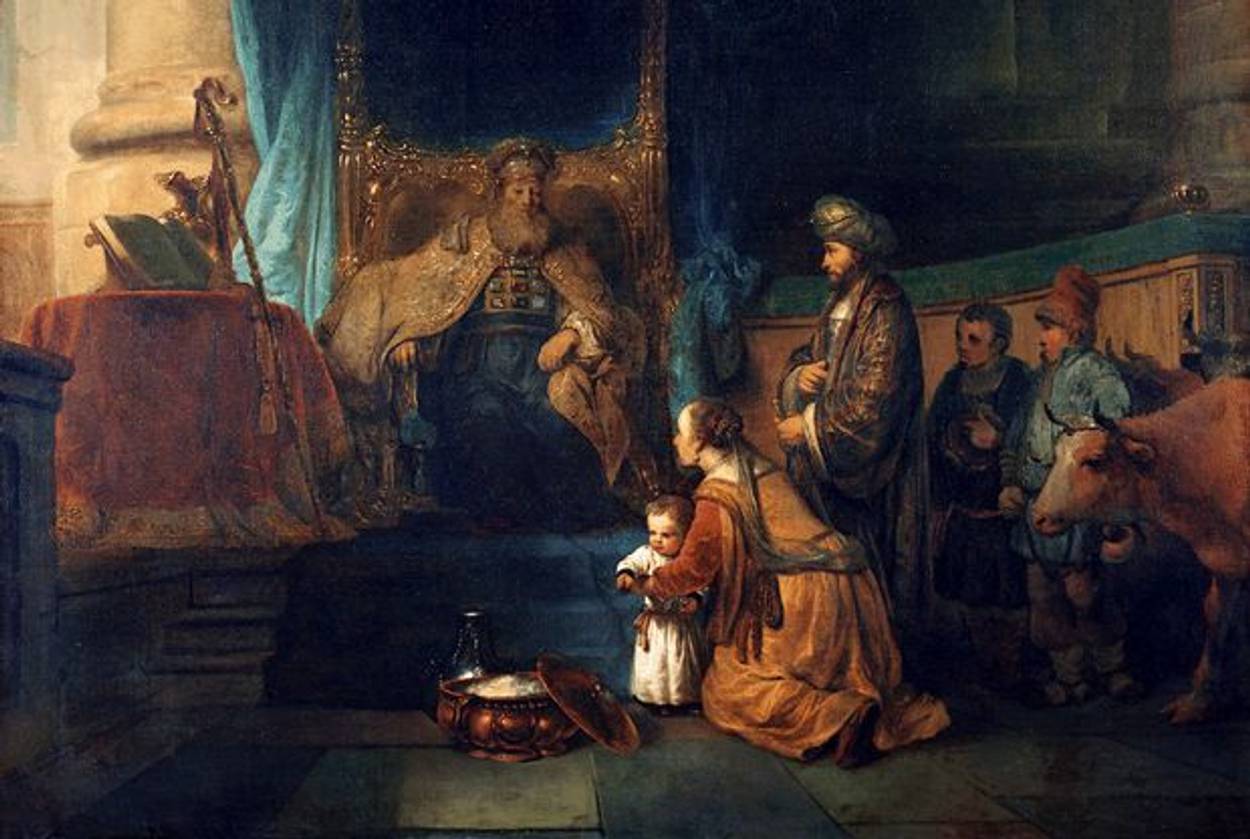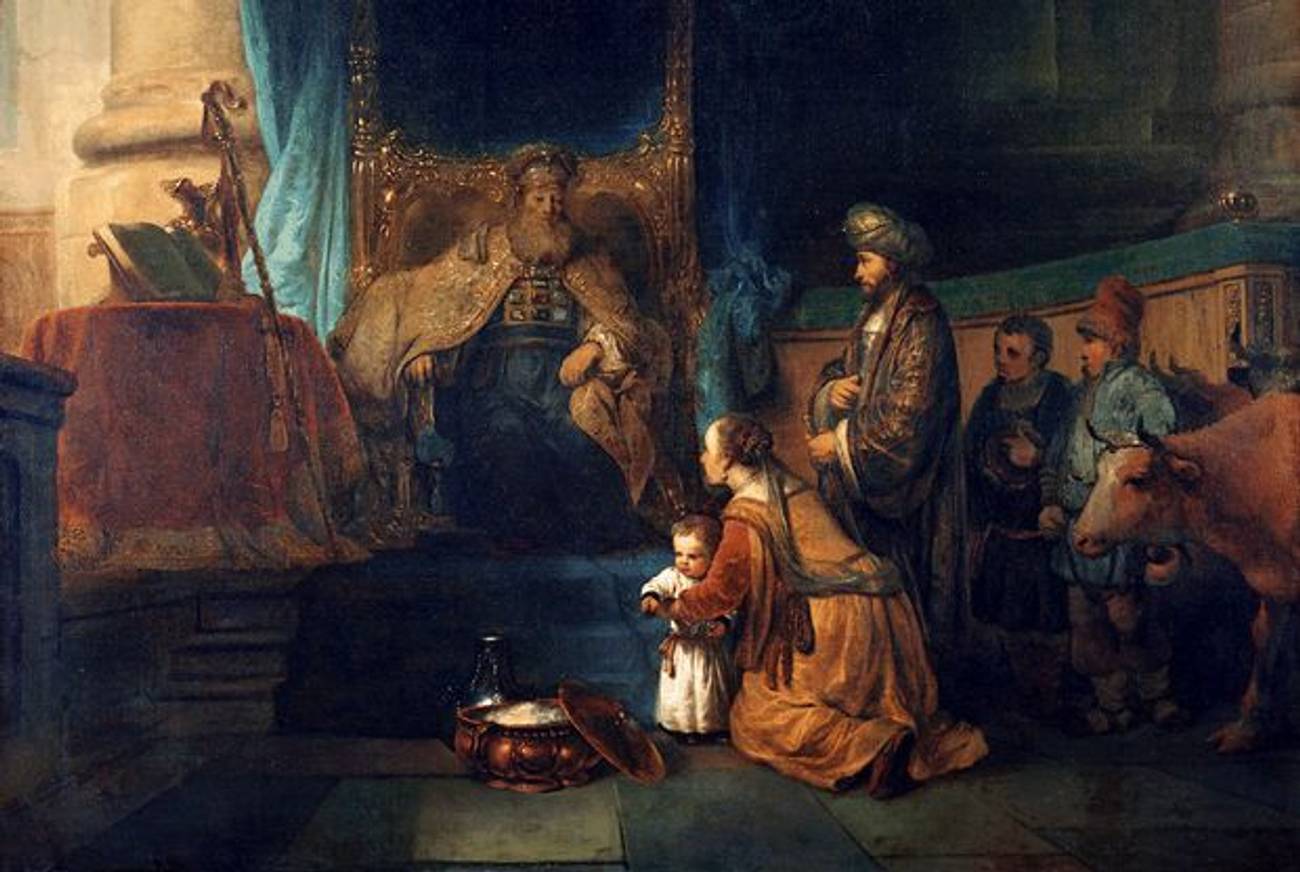Is There a Biblical Sperm Donor in the Rosh Hashanah Haftorah?
Hannah visited the high priest before conceiving Samuel. What happened?




When you need a sperm donor, the Bible probably isn’t the first place you’re going to look. But when I was in my mid-twenties, planning to launch a family, I was single and didn’t need to be married, and I was a rabbinical student immersed in scripture. And so it was only natural that I found inspiration in the Torah.
One of the primary prophetic texts in Judaism, one that is read every Rosh Hashanah in congregations around the world, turned out to be a wonderful tale of unconventional family making. In this biblical story, a woman named Hannah, who has been unable to conceive, goes to the shrine of the holy man Eli where she prays desperately to become pregnant. (1 Samuel 1:1 – 2:10) After spending time at the shrine, Hannah goes home and sleeps with her husband, Elkanah, discovers she is pregnant, and gives birth to Samuel.
The story raises the interesting question of what exactly happened at Eli’s holy shrine. Perhaps, after struggling with infertility in her marriage, Hannah received divine intervention. Since that interpretation is fairly unbelievable to modern ears, it makes sense to entertain other possibilities.
Is it possible that Eli the holy man was the world’s earliest documented case of a sperm donor and that it was Hannah’s husband who was the infertile one?
As is typical with biblical stories, the tale of Hannah is told in abbreviation, leaving much to be read between the lines. In the tradition of midrash, each generation of Jewish readers adds its own questions and interpretations to the white space between the printed words of text.
Looking at traditional discussions of Eli, I did not find any that considered him a sperm donor. My colleagues also could not recall seeing or hearing this interpretation, but Torah text always invites new perspectives based on the needs of the time. That’s what makes it a living document.
I wonder whether the act of sperm donation at the holy shrine could have been a secret shared among women but not publicly acknowledged. One reason this seems likely is that the text goes out of its way to point out that Hannah slept with her husband after her visit to Eli.
We are left wondering what rituals and practices took place at the shrine and what discussions took place afterward that did not get described in the brief story. Did Hannah share her experience with her husband? With her female friends? What was Hannah’s understanding of how she suddenly became pregnant after a long stretch of infertility? What was her husband’s understanding? What did Samuel know about his origins? Was sperm donation at holy shrines a commonly practiced method of alternative conception?
Hannah’s bold step in creating her family is a personal story about an individual becoming a mother, yet when the rabbis chose this story to be read in perpetuity on Rosh Hashanah they situated it in a universal context. Rosh Hashanah celebrates the creation of the entire world. Each year I marvel at how one woman’s story of family building is relevant to the creation of the universe. There is an essential link between our personal family building choices and the creation of the world. We build it one family at a time.
Hannah may not have had the freedom to speak openly about her options. I was lucky enough to be born in an era when one could. When I was ready to start a family, I was passionately involved in second wave feminism. I loved some women and I loved some men, and when I was ready to become a parent, my circle of beloveds was greater than one primary partner. So, like Hannah but in my own way, I had to figure out how to make a family.
I was seeking a man who understood the invitation to help me make my family, someone who wanted to be a donor and not a Daddy. I would be responsible for the nurturing, funding and executive management of family life. I would raise my children within a web of connection with donors, adoption, women lovers, former lovers and a gay male parenting partner. I wanted a known, not anonymous, donor because I think kids prefer to know where they came from.
It seems that Hannah’s donor would have been an “anonymous” one. Moms choosing donors today have the choice of known or anonymous donation. Some women invite a friend to be a donor, or network through friendship circles to find someone connected to someone to ask. Others use anonymous sperm donated through sperm banks.
But if Hannah’s donor seems to have been anonymous in her own day, why is the story told publicly in the Bible? Perhaps the answer is that Hannah and Elkanah’s son Samuel grew up to become a great leader of the Jewish people. He holds an important place in our story as the prophet who anointed the first Jewish king, King Saul.
Each one of our stories, then and now, is a piece of Torah, a part of the unfolding revelation. My unique choices about family making are just one of the many millions of family making building blocks that constitute the world. I was glad to find a friend in Torah who may have followed a path similar to mine in her own way in her own day. For Hannah and for me, our own personal stories are nestled into the big picture of creating families to sustain the world. For me and possibly for Hannah, choosing a sperm donor was an important step towards making a family. I hope Hannah’s donor way back then was as good as mine have been in these modern times.
Julie Greenberg is a Rabbi, family therapist and single mother of five in Philadelphia. She is the author of a new book,Just Parenting: Building the World One Family at a Time, about conscious parenting for modern families.